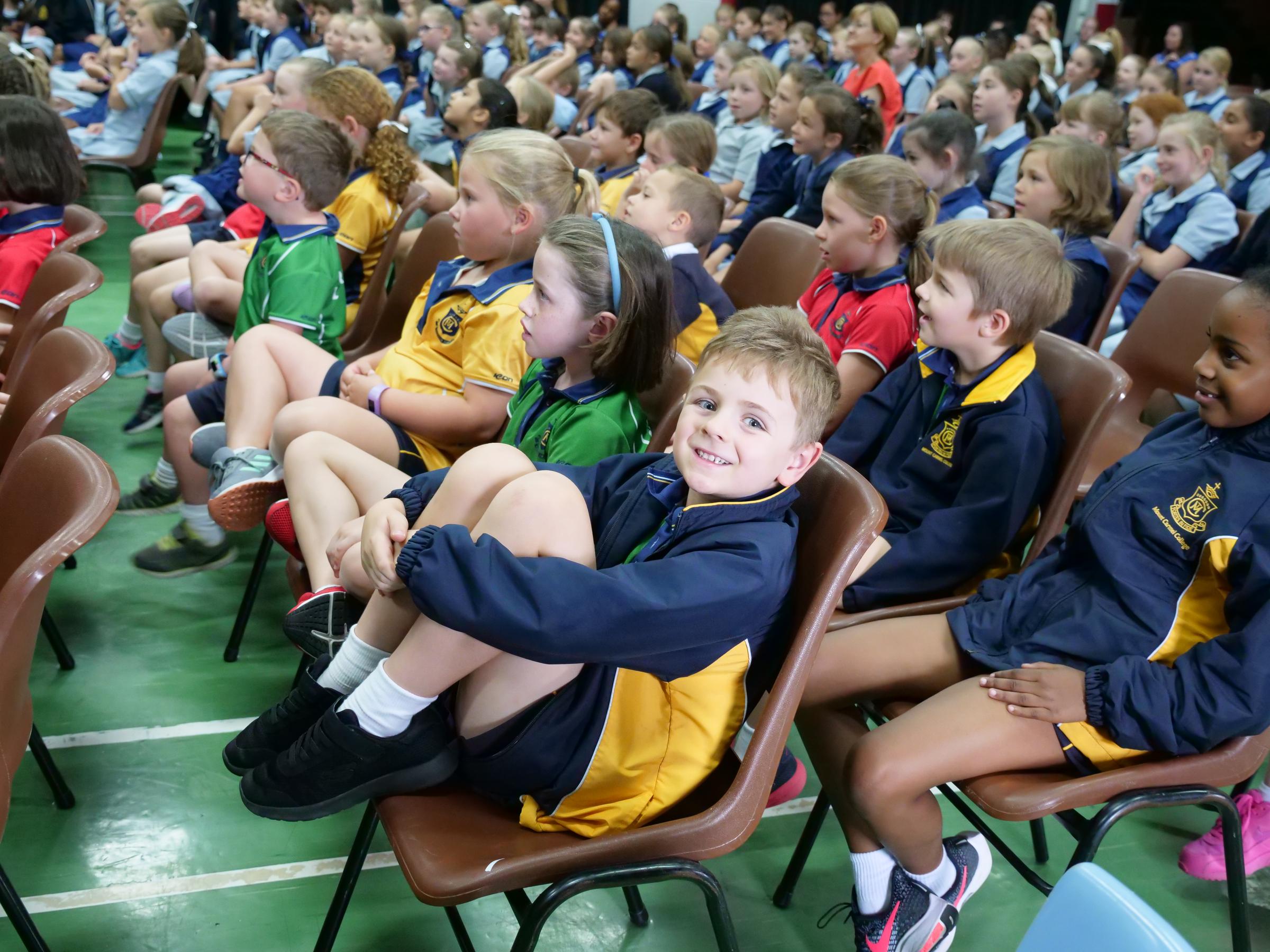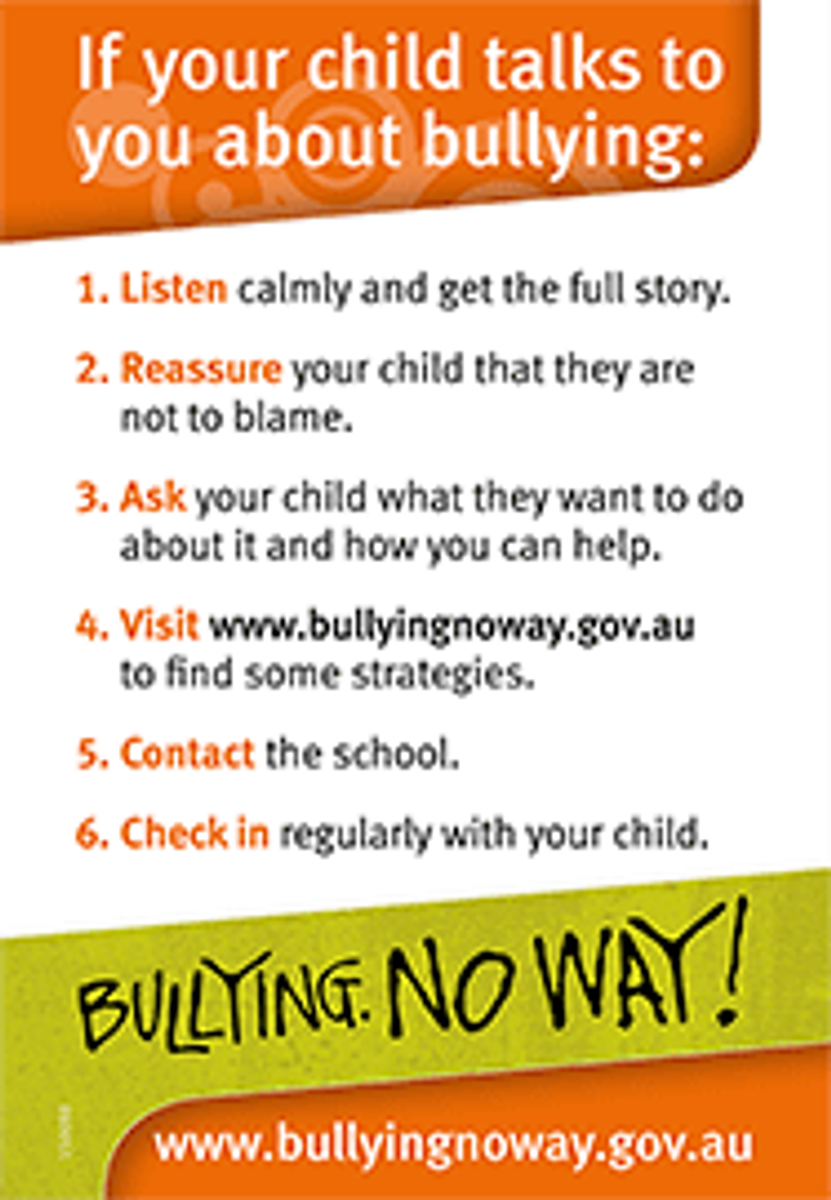From the Director of Primary

Bullying. No Way!
Education is a shared commitment between teachers, students and parents. IN order to achieve improved student outcomes, we must have a shared purpose one that achieved through shared conversations and shared actions. With this key message in mind I would like to draw attention to several key initiatives.
Friday, March 15 is a National Day of Action against bullying and violence. This year the theme is Bullying, No Way! Take action every day. We all have a responsibility to stand united against bullying and violence so that collectively we are creating safer communities for everyone – in the classroom, in schools and beyond.
What is bullying?
Bullying is an ongoing and deliberate misuse of power in relationships through repeated verbal, physical and/or social behaviour that intends to cause physical, social and/or psychological harm. It can involve an individual or a group misusing their power, or perceived power, over one or more persons who feel unable to stop it from happening. Bullying can happen in person or online, via various digital platforms and devices and it can be obvious (overt) or hidden (covert). Bullying behaviour is repeated, or has the potential to be repeated, over time. Bullying of any form or for any reason can have immediate, medium and long-term effects on those involved, including bystanders. Single incidents and conflict or fights between equals, whether in person or online, are not defined as bullying. www.bullyingnoway.gov.au
At Monday’s Prep to Year 6 Assembly the Year 5 and 6 Leaders will outline how we can stand united against bullying by providing tips for students and outlining activities that will take place in the yard next week. The national statistics around bullying are incredibly alarming with one in four students being bullied in person, and one in five online.
On the home front, parents and carers play a vital role work in preventing bullying and responding effectively if it happens. Key tips are provided in the following card.
Playing it Safe
During the past fortnight there has been considerable discussion about the Momo Challenge, an online game. The scary doll-like figure allegedly targets children and teens, asking them to participate in a game which involves setting them challenges or dares.
It is a timely reminder about ensuring that we are helping our children to be safe online. The best way to keep children and young people safe is to talk with them and be involved in their online world.
Setting up safe internet use:
There are things you can do to help keep children safe online, for example, filter unsuitable content or monitor their internet use.
You could:
- enable Google SafeSearch on all devices
- enable parental controls on streaming services such as YouTube, Netflix and AppleTV
- install software that filters content or lets you choose what times devices can be used/not used
- get to know how your child’s phone or device works so you can help them use it safely
- know children’s email addresses and passwords so you can monitor activity. If you do this, remember to let children know what you are doing and why
- check the permissions you are giving when you or your children install a new app. Your personal data such as photos and documents might be accessible to others. Read unbiased reviews before installing apps
- know how your device stores data, and whether this is secure. Many devices use ‘cloud storage’, e.g. Google Drive or Apple iCloud, to store data such as documents, photos or videos. Make sure children and young people:
- know the risks and benefits of ‘geo-location’ or ‘checking-in’ functions that identify their location. These can be limited or disabled
- use a PIN or access code on their phone or device so if they are stolen they can’t be used to send negative texts or images to contact lists
- do not expose younger children to inappropriate content.
During the coming weeks I will continue to provide tips about how we can collectively work together to educate the students so that they be safe online.
NAPLAN Online - Term 2 (14-16 May)
The National Assessment Program – Literacy and Numeracy (NAPLAN) assesses literacy and numeracy skills that are essential for every child to progress through school and life. Students in Years 3, 5, 7 and 9 participate in the annual NAPLAN tests in reading, writing, conventions of language (spelling, grammar and punctuation) and numeracy.
The assessment provides parents and schools with an understanding of how individual students are performing at the time of the tests. NAPLAN is just one aspect of a school’s assessment and reporting process - it does not replace ongoing assessments made by teachers about student performance.
In 2019 most students across Australia will sit NAPLAN online. At Mount Carmel College, the Year 5, 7 and 9 students will complete the online assessments while the Year 3 students will continue with the paper tests. To ensure that the Year 5 and 7 students are familiar with the online format, the students will be involved in practice tests on Monday 8 and Tuesday 9 April.
Although NAPLAN Online is not a test of keyboard skills students are encouraged to have a keyboard especially for the writing assessment.
Why online? One of the main benefits of NAPLAN Online is tailored (or adaptive) testing, where the test automatically adapts to a student’s test performance. The test presents questions of higher or lower complexity, depending on a student’s performance. A student’s overall NAPLAN score is based on the number and complexity of questions they answer correctly.
More details about NAPLAN will be provided at the commencement of Term 2.
Mrs Caroline Wilson-Haffenden - Director of Primary


